|
Another repost from Bill Caraher.
This past week I enjoyed a nice set of papers at the annual School of Graduate Study’s Scholarly Forum here at the University of North Dakota. I was, however, struck by some trends in the graduate student papers that I did not particularly find useful. My papers tend to conform loosely to a template and some folks have nudged me to write a bit on my template and my general critique of conference papers in my blog. I am not super excited about writing such a pedantic post, but I’ll do it anyway. As always, if you do it some other way, have differing opinions, or just want to hate on me, the comments are open. So, here are five rules for any graduate student giving a paper at a conference: 1. Read your paper. There are three reasons for this. First, it is tremendously difficult to present a complex argument from short notes. Complex arguments rely on a certain amount of intellectual and rhetorical rigor that is typically foreign to a conversations style of speaking. Second, if you have rather extensive notes, one gains little advantage from reading them. If you have extensive notes, might as well write out the entire paper. Finally, people at academic conferences are not there – in general – to be entertained. We’re there to hear sophisticated arguments. If someone in the audience is bored because your presentation style is boring, then they aren’t doing it right. Present a good argument and no one will be bored. 2. No More than Five Words on a Powerpoint Slide. My policy is to avoid the dreaded “Powerpointer” whenever possible. In fact, I’ve given it up for Lent this year. I’ve never quite understood the practice of putting words on a Powerpoint slide that are the same as the words you are reading in your paper. At best, it encourages us to ignore you; at worst it is a distraction. Use The Powerpointer for images that help advance your argument. If images are unnecessary, then skip The Powerpointer and force the audience to focus on your text. 3. Thesis. Provide your thesis within the first 2 minutes of your paper (or in the first 10% of your content). If I have to wait 5 minutes or more to figure out what you’re arguing, then I have lost interest. Your thesis should be supported by historiography or a literature review. As soon as you tell me your thesis, tell me why I should care. My rule is: drop your thesis within the first 2 minutes and then spend the next 2 minutes contextualizing your argument. For a 1500-2000 word paper, it should be 200 words for an introduction concluding with a thesis and no more than 300 words on the secondary literature supporting your thesis. 4. Use a Case Study. I am guilty of trying to say everything that I have ever thought on a topic in a 15-20 minute paper. While these papers stand as personal monuments to my brilliance (cough, cough), they are usually pretty rough on the audience. Recently, I have tried to focus my papers by using a single case study or single, focused argument. I try to keep the case study to around 1000 words and leave a couple hundred words for a conclusion that will relate my single argument or case study to a larger body of evidence. 5. Chose your Last Sentence Carefully. I just discovered this very recently (and in part it is a product of blogging because I never know how to end a blog). A nice, final sentence tells the audience and the moderator that your argument is now done. It avoids the dreaded “that’s all I have to say”, awkward conclusion moment. It also gives the audience something to remember from your paper and gives you one last chance to exude confidence before people begin to pepper you with questions. I know everyone has their own style. In fact, when other people have delivered papers that I wrote, I’ve been told that my somewhat Billtastic style comes through. And I also realize that adhering to a rather formal template can imply that an argument resides – somehow – outside the text (rather than being coterminous and intrinsic in the text). I also know that some disciplines love The Powerpointer more than knowledge itself and so my somewhat primitive attitude toward The Powerpointer probably reflects my rather conservative disciplinary leanings. My post is meant mainly to offer some practical tips to students as try to figure out how to present their research at academic conferences. That’s all I have to say.
0 Comments
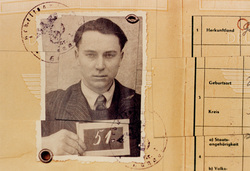 Today I am packing the artwork for the Formation Matters exhibition that I have curated for joint meetings of the College Theology Society (CTS) and the National Association of Baptist Professors of Religion (NABPR). This exhibitions represents the culmination of years (since CTS's meeting at Regis in Denver in 2006) thinking and discussions on how to include art into the conference discussions. Back in 2006 the theme was on art and beauty (a natural connection to host an exhibition) but alas no actual visual connection was made beyond the standard conference presentators and presentations (of which I was one). The Arts Media Literature and Religion section does a wonderful job at providing a venue for discussing such matters. My hope with the exhibition is to dovetail this group and offer a first hand, or primary source, kind of opportunity for conference goers to connect their research and thoughts to the work and vice-a-versa. This year's conference theme is Teaching Theology and Handing on the Faith: Challenges and Convergences. For the exhibition, I have chosen for focus the chosen work on ideas of memory, tradition, and formation (I will say more about these areas in the coming days). As I mentioned, I have talked to CTS folks about this for a few years now and I am so excited to see it come to fruition. I am so thankful for Creighton and CTS for allowing me to experiment with this little venture. Over the course of the week, I will be posting more updates, information on the artists, and images from the gallery.  I've waited to post anything on Barton for a couple of weeks because I have not known what to say. Barton's death on May 30th caught me by surprise...and yet it did not. I knew he had aids...I knew he had been ill for much of the past year...and well...all people die eventually. But I guess I was just not prepared to say goodbye to someone I felt I had just met. Before coming to ND I had no idea who Barton was, but was quickly introduced to his work by fellow students and faculty. While Barton had friends and collectors across the country no doubt, peculiarly he had a pocket of friends, admirerers, and acquaintances in the Red River Valley of North Dakota. It is through these connections that I had two opportunities to meet him. First, on our print trip to NYC in the fall of 2011, we stopped in to his apartment and studio for a few hours and chatted with him. It was such a remarkable space filled with art and artifacts that bespoke of Barton's imagination, creativity, sense of humor. He welcomed us in to his cramped home as if we were long friends. The second visit (from which this photo was taken) spoke more to me about the man than I could have expected. Sundog Press, here at UND, did a print for Barton...a prayer rug made from stamps. It is a beautiful peice. I was headed to NYC to speak at the College Theology Society annual conference and it worked that we could meet up and I would assist Barton in signing and dividing up the prints. It was a great 3 hours or so. Not only did we snoop around his place, look at the artifacts again, see his new work, but he bought us dinner, answered my silly questions, and even discussed religion with me (I have in mind to do a paper on Barton's religious imagination some day). I will be the first to say that I did not know Barton well. But it is strange how in the course of two short visits, this man came to impact my life in such a unique way. His sense of humor and hospitality was remarkable as was his generosity. I am truly thankful for those brief hours with him, it was the highlight of our trip to NYC, and those memories will linger on shaping my life and art practices from here on out. Thank you Barton for your courage, humor, challenging us with your work, and your gracious spirit. For more about Barton, check out this recent article by the NY Times. As a graduate student at UND, who also lives on campus, and took a significant amount of credits over the summer during the MFA program, this is one of the happiest days of the year. Not only do things transition to a different pace of life and season of fun things to do, the undergraduates students, for the most part, are gone. The studios open up and are generally quiet to get a lot done. I've wondered over the past few years is it troubling that as a future educator that I am so relieved when students leave? I know faculty are ready for their breaks too. I suspect that I will be as well when I am teaching. Now though, as a graduate student, I suspect it is pure selfishness. Not in a mean spirited way, because many of the undergrads are great to have around. But there is something to having those workspaces all to oneself. And since I dont have money for a press and studio of my own, UND's will have to suffice until that time. For all my friends out there teaching and struggling to finish grading...strength and peace be with you.
This past month has been a busy and exciting one with two solo shows up simultaneously. Tomorrow, the show Concrete Abstractions at Minot State University will come down and I will make the 3+ hour drive out to pick up the work. Minot State has 2 galleries, one in the art department and one in the library. This exhibition was in the library. It is a unique but quality space for displaying. As Micah Bloom shown with his images below, the reflective surfaces mirror nice angles. (A special thank you to Micah for his photographs...leave it to the photographer (me) to forget to shoot images of his own show at the opening). I am immensely grateful to Minot State for the opportunity to show my work, much of which has not been seen beyond the walls of UND's art department.
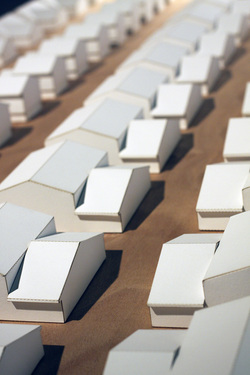 As I said a few weeks ago, it is MFA season here at UND's Hughes Fine Art Center. Last week Meghan Duda presented her work. Influenced by a range of artists from the New Topographics to Gordon Matta-Clark, Meghan's work considers the ubiquity of the suburban home. When Meghan and her husband relocated to Fargo a few years ago, she was struck by the possibility of horizontal expansion has shaped the suburban housing areas of Fargo. Home shapes follow a few rough patterns in theses new developments. And yet Fargo is not alone in that respect. Several of her images come from Utah as well. As someone who shares her interest in the New Topographics, I was immediately struck by (at least what appears to me) a strong lineage with several members of the group, namely Stephen Shore and the Becher's. Her connection to Shore is in subject matter while her connection to the Becher's is in matter of typologies of suburban homes as well as their rigorous system of grids within their installations. Following this method of Becher's typologies, Duda has laser cut the houses from the image thus breaking up the picture plane. By floating the image off the back frame, she is able to accentuate the break and absence with the lighting and shadows. On others, she has used the laser to etch detailed house floor plans over the image. Another one of the key factors in her images is that she also draws upon the objective or sense of detachment so often associated with the group but extends backward strongly to Ed Ruscha. Like the New Topographers, she attempts to stay neutral...balancing between critique and endorsement.  Last week was the first of UND's MFA final exhibitions. First up was Patrick Awotwe. Patrick's African influences are unmistakable in his beautiful work. He blends traditional symbols and imagery into both his metals and fiber works. I have included a variety of images from the show, including his artist statement. Enjoy. Last fall I was interviewed forthis little article by UND's alumni association. The articled talks about the generosity of Jackie McElroy-Edwards,a former printmaking faculty and department chair at UND. She has set up a scholarship specifically for printmaking. Those who are printmakers certainly know the costs of being a printmaker...cans of ink, paper, and all the other little things that add up so quickly...not to mention if one has to buy blankets, a press, rollers, etc that quickly add up to thousands of dollars. So a scholarship along the way is most helpful.
I am thankful to Jackie and her husbands generosity for making my journey through grad school a little less expensive.  Last week was a great week in spite of the all the different things going on. Thursday I drove out to Minot and Minot State University for my opening of Concrete Abstractions (a collection of 24 photos of regional architecture). During the opening I gave a short artist talk about the work and my interests in photography. The next morning, I gave a lecture on the art historical influences of the body of work that ranged from Edward Hopper, Charles Sheeler to Ed Ruscha, and of course, the New Topographics. It was a great to visit and mingle with students, meet faculty and generally see the work hanging. Much of the work has never been shown before so it is nice to have it see the light of day. Saturday was unexpected. A friend offered us free to tickets to see Sir Elton John. While I am not a huge fan, I wasn’t gonna pass up the opportunity to see a legend…especially for free. He put on a great show that we followed up with a trip to Rhombus with friends. And now its back to getting ready for my show at the Empire Art Center here in Grand Forks. Another solo show. Sometimes I wonder why I do this to myself. Sure it looks great on the CV, it doesn’t feel the best amidst the craziness. The Empire show goes up next Monday and will be a series of 21 small prints from the Visual Analogues series. This collection of prints is largely all new (2011-2012) and has yet to be shown anywhere. We are still contemplating an opening or closing reception…details to follow. This week also marks a busy month of MFA grad shows at the Hughes Fine Art Center. This week is Patrick Awotwe from Ghana. His metals and tapestries are remarkable. If you are in the Grand Forks area, please get over to UND to see the show. Last week was spring break here at UND which coincides with midterm. Even though I am no longer a degree seeking student, I still measure time according to the university calendar. It has been a busy and productive first half of the semester with the production of a significant body of work.
Since graduating last May, I've been thinking about this series...perhaps even earlier as it actually utilizes aspects of other projects. I wanted to take the idea and execution of the prints that I did for the books in the MFA exhibition and put them into a format similar to the large translucent cyanotype landscapes that hung out from the wall without a frame. I reworked the hanging process to a more suitable and minimal method. Overall, I am fairly happy with these pieces. Doing the work, the process of hanging it, and simply the look of it on the wall suggests new directions and possibilities that I hope to work on perhaps yet this semester. |
Ryan StanderArchives
January 2018
Categories
All
|
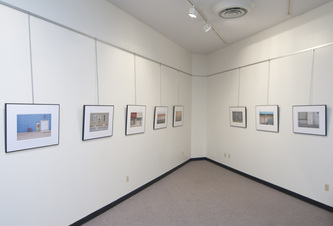
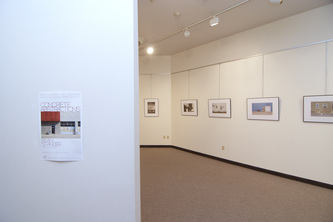
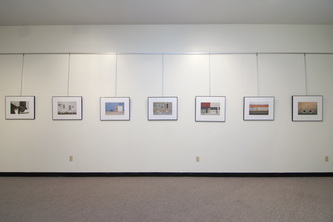


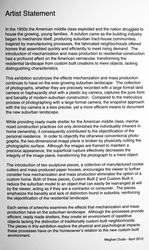






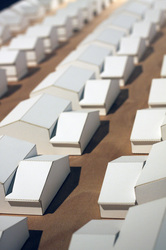




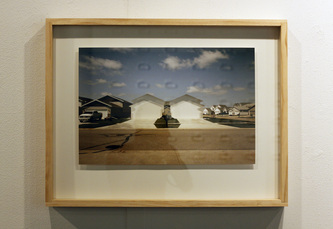

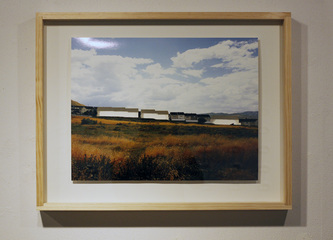



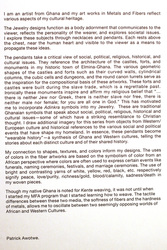
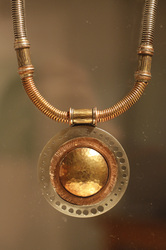
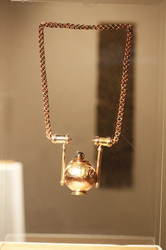
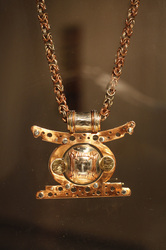
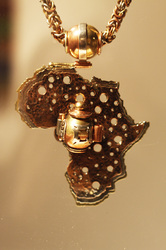
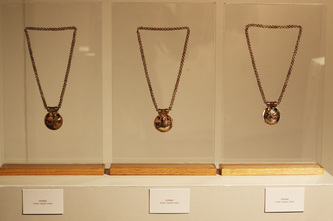

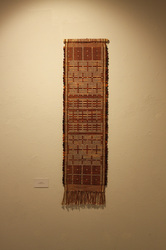

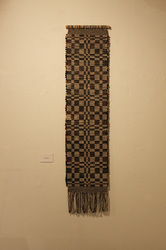
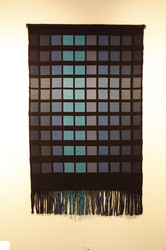

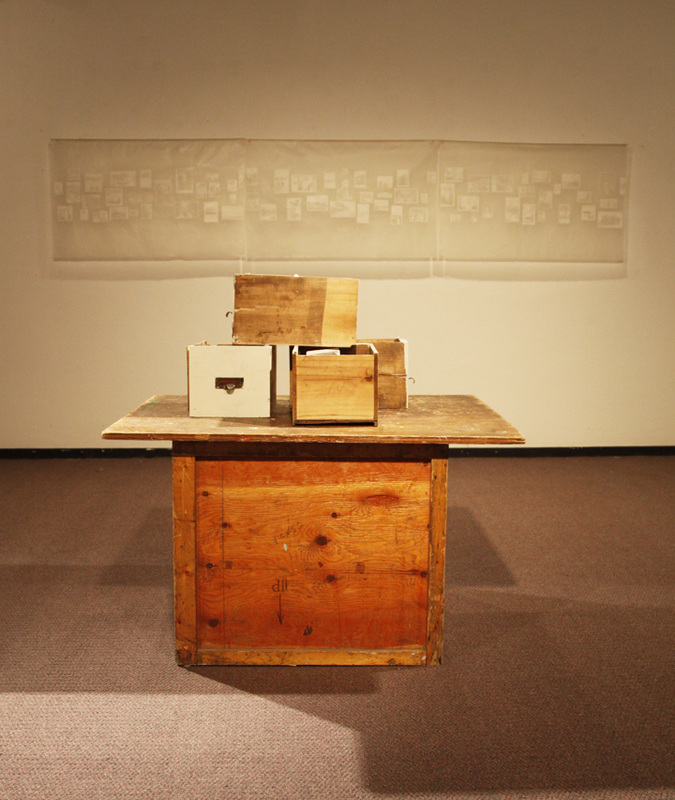


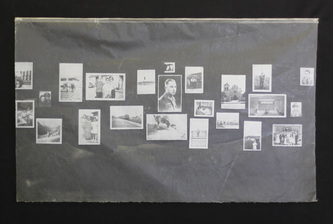

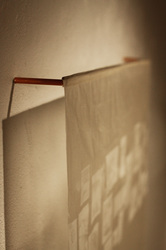

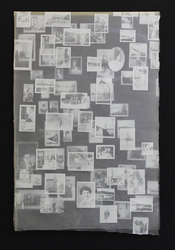



 RSS Feed
RSS Feed
